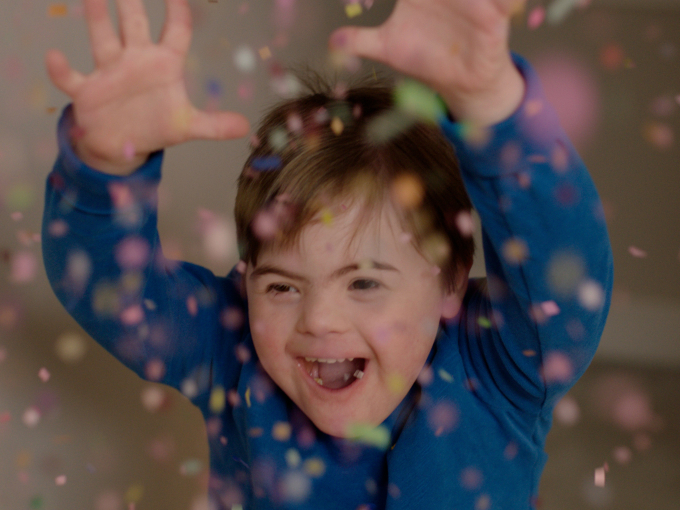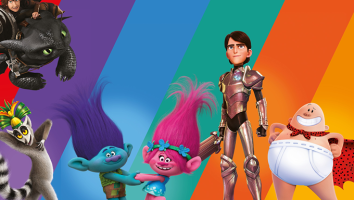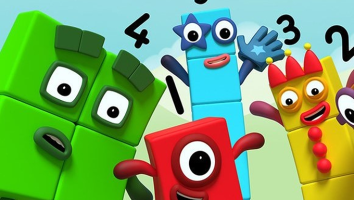Kidcos aren’t just looking to make content that educates and entertains anymore; the next step is all about evoking a calming and tingling sensation. The ASMR trend is hot right now—especially in the online space—because it taps into kids’ love of sensory content and desire to destress, as well as a need from families for some slower-paced TV.
ASMR stands for Autonomous Sensory Meridian Response, and it’s that tingling sensation that runs down the back of your spine when you hear certain sounds. ASMR often also triggers feelings of calm and relaxation. Videos on TikTok and YouTube show creators whispering and interacting with objects to create soft yet stimulating noises. They’re popular on TikTok, where ASMR vids have more than 870 billion views; and ASMR as a search term was the 20th most common query on YouTube worldwide in Q1 2023, according to Statista.
DreamWorks Animation leaned into this prevalent trend in November to market its animated film Puss in Boots: The Last Wish. The studio’s goal was to make its feline star feel hip and relevant for today’s kids, and the 40-second clip it came up with (“Puss in Boots: The Last Wish | ASMR”)—in which Puss whispers, drinks milk and polishes his boots—generated more than 26 million views across all social media platforms. (Posted in November 2022, the YouTube video alone has racked up more than six million native views.) It was so successful that the studio is open to doing more ASMR in the future, Universal Pictures tells Kidscreen.
The bottom line: Kids really love these chill (and sometimes strange) vibes, and producers, toycos and broadcasters are starting to chase these sensations with new content that taps into trends around sensory play, a hunger for slower-paced content, and a desire for tactile/social-emotional experiences.
ASMR DIY

Emma Smith’s “Ball Pit of Sounds” video from her WhispersRed Sleepy Children ASMR channel for kids, has more than 100,000 views.
The inexpensive nature of ASMR videos—whose creators can simply whisper into the mic or use everyday objects to make relaxing sounds—makes it easy to produce videos quickly, says YouTuber and author Emma Smith.
Smith started making her videos a decade ago as a therapeutic way to relax after a car accident left her with PTSD. She has more than a million subscribers on her WhispersRed ASMR YouTube channel, and after seeing comments on her videos from parents saying their kids liked the slow pace of the videos, she started making clips specifically for this audience. The resulting offshoot channel, WhispersRed Sleepy Children, features bedtime stories and soothing sounds and has generated more than 2.4 million views.
Her hope is to eventually expand what she’s done on YouTube into a long-form series for kids, as well as working with producers to help them make effective and kid-friendly ASMR content of their own. Smith says the industry shouldn’t be intimidated by this trend because the reality is that kids have been getting their ASMR fix by watching calming personalities like Mister Rogers and Bob Ross for many decades—way before anyone realized what it even was.
A new feeling

particle6’s Look, See, Wow! blends toddler obssessions like trains and squishing with soothing sounds.
London-based particle6 made a ASMR-focused series called Look, See, Wow!, (pictured at top) which Sky Kids premiered in June. Each episode of this 26 x five-minute live-actioner explores a different sound or sensation, such as bubbles, shifting sand and falling. From a buyer’s perspective, the calming and simple nature of ASMR videos translate to relaxing videos that kids keep coming back to.
“There’s a clear appetite for educational content that is less formal and didactic, and more inclusive of different modes of learning,” says Lucy Murphy, Sky Kids’ director of content. “The episodes are highly repeatable and cover a wide range of sensory explorations.”
Audience response to the show has been very positive, she says, and that’s largely because ASMR doesn’t just appeal to the senses; it grabs kids’ attention and helps them focus on what they’re watching.
“Kids naturally explore their worlds in a very multi-sensory way, and ASMR is an extension of that sensory-led play,” says Murphy. “The guiding principle was learning through active curiosity, and we recognized visual and audio ASMR as a key trend that could help craft ‘lean-in’ moments as part of a sensory journey.”
Particle6 had produced kids digital content for BBC in the past, including several BBC Bitesize videos, but Look, See, Wow! is the studio’s first long-form kids show for TV. It needed something to help its show stand out at market, and ASMR is still an untapped niche, says founder and executive producer Eline van der Velden.
In addition, underserved neurodivergent kids can benefit from the calmer, quieter pace of the show’s short episodes, which highlight toddler obsessions (think trains and fluffy toys) and sensory experiences like things that are sticky and squishy. Kids, and even parents, are hungry for relaxing screen time that won’t over-stimulate them, van der Velden adds.
For producers looking to make ASMR content, particle6 learned through test screenings with more than a dozen kids that they love when videos focus on one object that takes up the whole frame. They showed a strong preference for this kind of experience over looking at drone footage where there was a lot to take in. The studio also worked with a special needs expert to make sure its content would be beneficial to these viewers. (For other producers getting into ASMR content, van der Velden offers this advice: Don’t assume you know what sounds will be calming. As one unexpected example, the kids particle6 consulted were surprisingly scared of sewing machine sounds.)
“ASMR is how kids experience life,” says van der Velden. “They’re more in tune with exploring and learning by feeling and listening, so when they’re squishing Play-Doh, that’s all they’re thinking about. ASMR brings that back to life for us adults, too.”
Toys that tickle the brain

Playfoam’s eight pack is it’s most popular product, partly because of its a low cost and it gives kids a lot to squish and squash, says Lee Parkhurst.
ASMR also has strong toyetic potential, in part because it overlaps with kid-driven consumer product trends such as sensory play, social-emotional learning and unboxing. In a survey it conducted with US parents in June, KidsKnowBest found that 40% of those who know about ASMR would consider buying something ASMR-related to help their kids relax.
This newfound obsession kids have for toys that “literally tickle the brain” isn’t going anywhere, says Lee Parkhurst, senior marketing manager at LA-based toyco Educational Insights. ASMR products have a long runway ahead of them because, like the hot social-emotional play category, ASMR toys can relax kids and help them regulate their emotions.
Educational Insights’ 17-year-old Playfoam brand (a foam that kids can squish and squash) took on a whole new life in 2016/2017, when kids began flocking to TikTok for short, relaxing videos featuring the product. More broadly, ASMR toys got another boost during the pandemic when families suddenly had a heightened need for products to help kids relax, says Parkhurst.
ASMR-focused toys are also typically inexpensive—Playfoam’s eight-pack, the brand’s most popular item, only costs around US$10. The company predicts Playfoam will be its biggest-selling toy this holiday season, both because of its low price point and because kids have never been hungrier for tactile and calming play.
These sorts of toys are starting to take off in the North American school market as well, and there’s an opportunity for toy companies to get into kindergarten classes that are starting to set up “calm-down corners” where kids can destress with sensory toys, like Playfoam.
Now that producers and toycos are giving industry cred to a fad that has historically been driven by YouTubers and TikTokers, ASMR only seems poised to get bigger. So don’t be afraid to experiment with whispering into mics or working in a squish here and there—kids will thank you for it.
“ASMR is about satisfying visuals and sounds, and the attention that sensory play is getting now means families are looking for tactile and soothing play that lets kids be creative,” says Parkhurst. “People are always finding new ways to soothe themselves, and ASMR is how people are taking care of themselves and coming back stronger.”



























